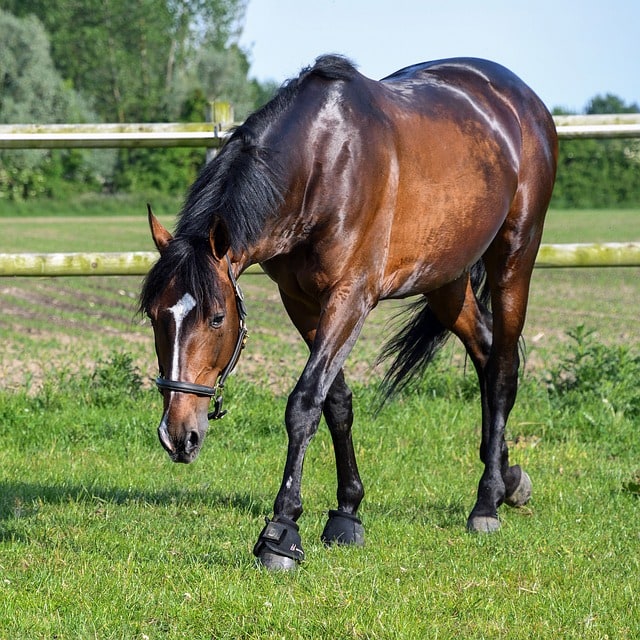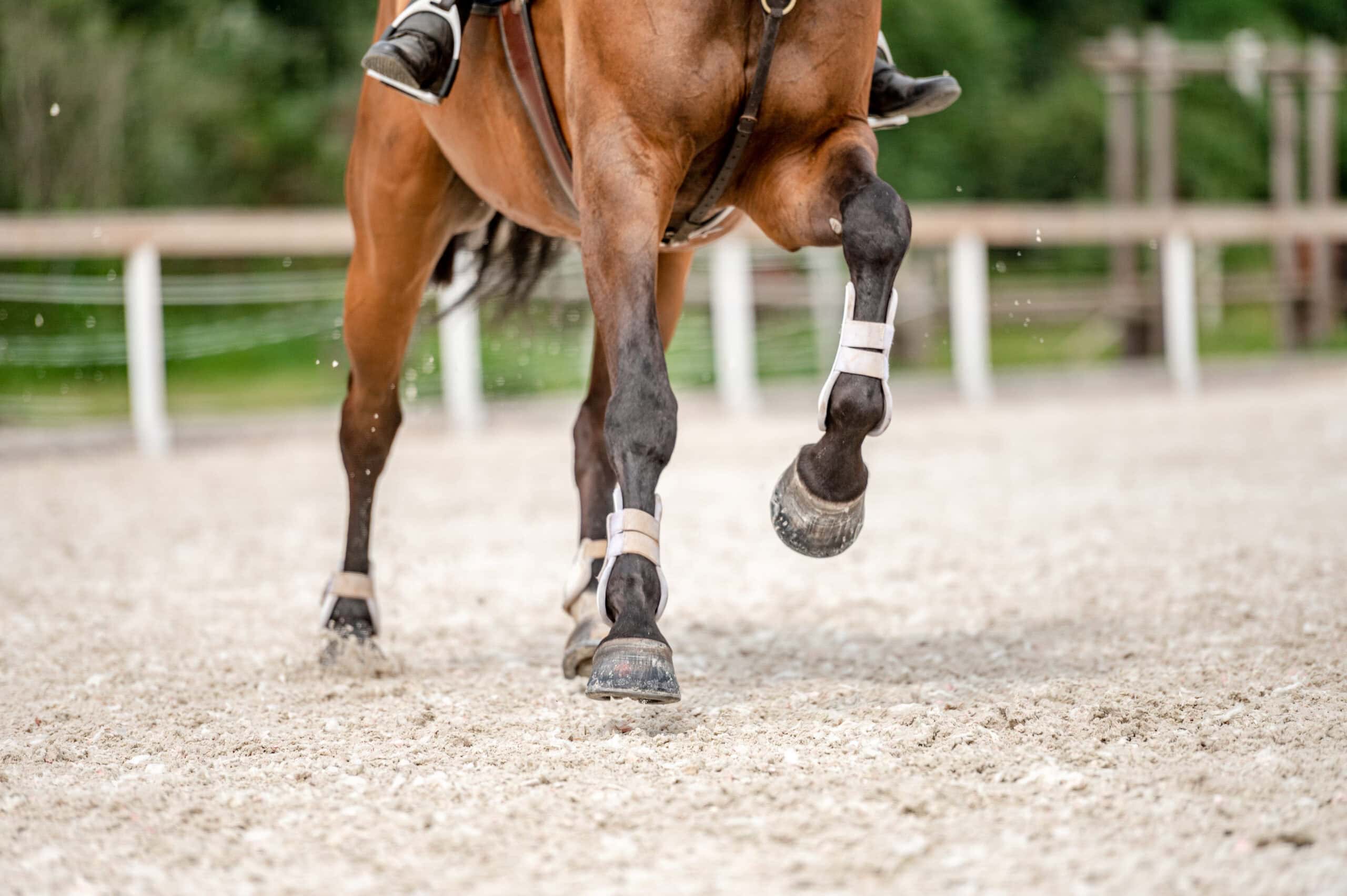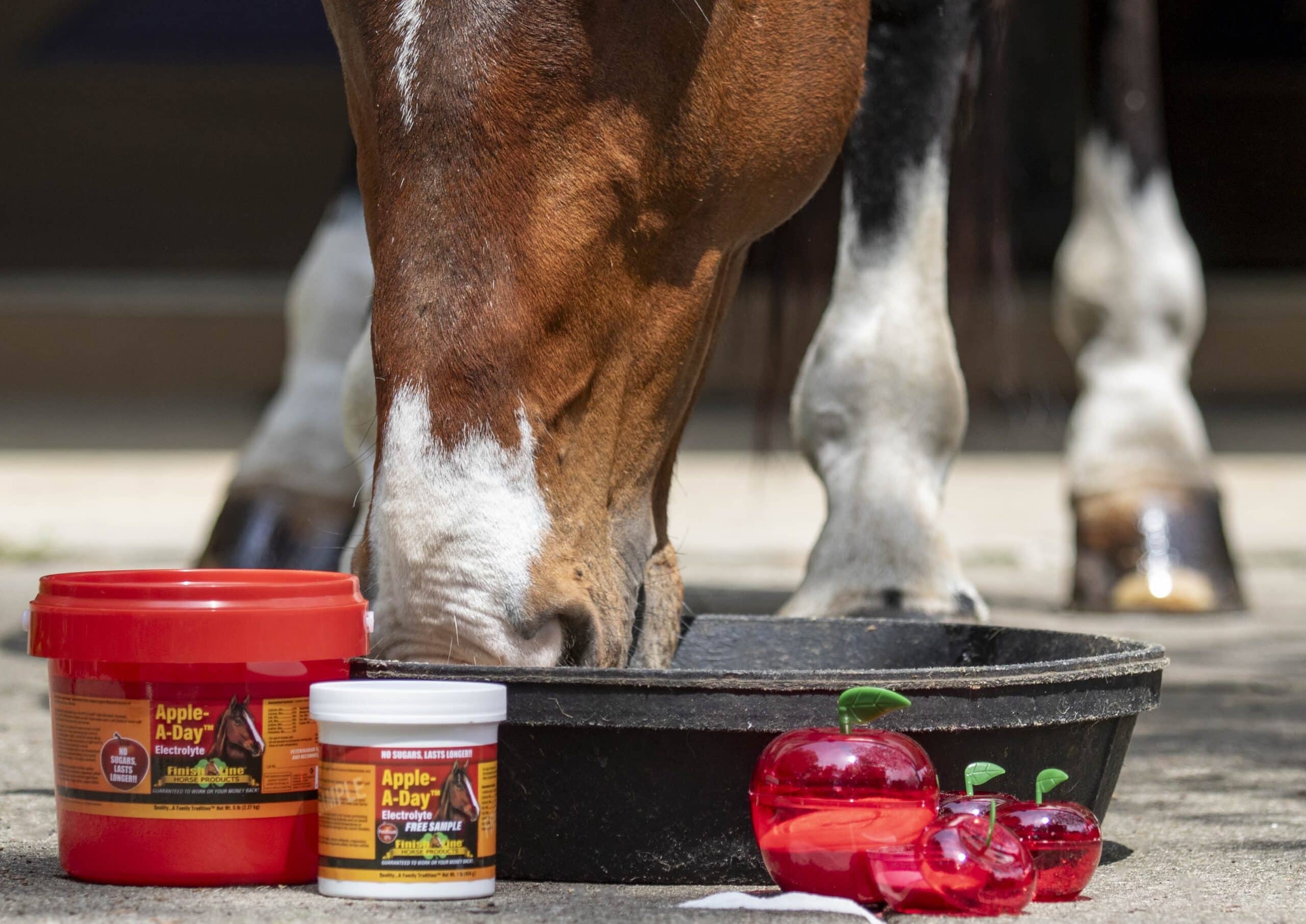Arthritis is something normally associated with people, particularly those in old age. But humans aren’t the only animals susceptible to the condition, as it can affect horses as well.
Dr. M.J. Martinelli, clinical assistant professor of equine surgery at the University of Illinois told The Horse Magazine what the textbook definition of arthritis is for horses.
“Arth’ means joint and ‘-itis’ means inflammation,” Martinelli stated. “In horses, osteoarthritis is the more common term, meaning inflammation of the bone and cartilage of the joint. However, there is a term in the human literature called ‘osteoarthrosis.’ ‘Osis’ means ‘disease of.’ Therefore, this term means a disease affecting the bone, cartilage, or surrounding soft tissues in a chronic way. Although possibly more accurate, it is rarely used when dealing with horses. More practically in the equine industry, the term arthritis is usually associated with any degenerative condition associated with a joint.”
Arthritis in both humans and horses is painful and can be quite debilitating if not mitigated. A person experiencing joint pain can speak to doctors immediately about their issues and can be prescribed any number of medicines to alleviate some symptoms. Horses cannot consult veterinarians about their pain and there is not a large market for horse arthritis medications.
We as equine owners, trainers, and caregivers must do our best to prevent, detect and lessen any discomfort equines have related to arthritis. There are symptoms, risk factors, and treatments for the disease that all horse owners should be aware of.
Symptoms
“Obese horses are at great risk of developing arthritis over time.”
According to The Spruce, some names for horse arthritis include Degenerative joint disease, DJD, osteoarthritis, OA, equine arthritis, bone spavin, joint disease, and ringbone among others.
Arthritis is typically caused by the erosion of cartilage, the flexible material found between the two bones of a joint that absorbs shock and allows for easy joint movement. The cartilage cannot completely repair itself and eventually, the bone beneath the deteriorating layer of filament also becomes damaged. This will cause the horse even more discomfort and can create heat as inflammation develops in the joint.
Compression and stress wear away at the cartilage over time causing pain, stiffness, and eventually lameness. The disease can affect any joint within the body, including the shoulder, back and stifles, and the neck. However, it most commonly occurs in weight-bearing joints such as the hooves, knees, and fetlocks. Horses used for racing, reigning, jumping dressing and other high-impact sports are particularly susceptible to developing arthritis in these areas.
The specific location and type of arthritis a horse develops are impossible to predict. If signs of the disease are detected, contacting a trained medical professional to get official diagnosis and prevention techniques is always advised.
Risk Factors
There are things owners can do on their own to prepare for the likeliest scenario of the disease’s development. There are clues to where arthritis may present itself hidden in things like the horse’s past history of injury, their current physical state, and working conditions, according to Equus Magazine.
There are many things that can lead to arthritis and knowing what some of them are can help owners detect signs early and get a head start on managing the condition.
Traumatic musculoskeletal injury
Severe injuries to the bone or soft tissues near the joint can lead to arthritis by accidentally destroying cartilage through massive inflammation. Penetrating injuries like puncture wounds can also adversely affect joints by introducing harmful bacteria into the area.
Should an injury occur, make the healing and recovery process your top priority. But during this phase, think about whether the accident could lead to arthritic problems in the future. Consult your veterinarian about whether there are rehabilitation techniques you can employ to help reduce the risk of potential arthritis from the injury.
Vigorous work before physical maturity
The joint cartilage found in young horses is still developing and may not be able to withstand intense or repetitive work. If the cartilage is damaged, it is much less likely to heal properly than in a more mature horse. This could lead to a premature and severe case of arthritis.
If you do put a young horse to work or through competitive training, remember to take it slow, keep the activity levels light and allow the equine ample time to rest between sessions. Joints naturally become inflamed when subjected to rigorous demand, and without adequate rest, a young horse’s body cannot fight the inflammation and arthritis will begin to develop.
Horses that work for a living such as ranch or lesson horses, or those in serious competitions, may have few opportunities to rest because of their busy schedules. However, it’s vital to make time for recovery. It’s also important to know that torque, or twisting force, can be very damaging to joints, so try to avoid excessive work done in small circles.
Poor farrier care
If a hoof is unbalanced in any way, it places strain on all the joints above it. Subpar or inconsistent farriery creates things like low heels and overgrowth which will ultimately result in arthritis if the problem is persistent.
Finding a skilled farrier is vital to maintaining your horse’s joint health. Seek recommendations from veterinarians or peers in your line of work or competition about adept farriers they may know of. Once a professional is found, maintain a consistent schedule of appointments. Try to keep sessions booked before hooves become overgrown. For horses at risk of developing the disease and those already suffering from it, long hooves can slowly erode more cartilage and cause further discomfort.
Obesity
The more a horse weights, the more poundage is applied to its joints with each step. Obese horses are at great risk of developing arthritis over time if their weight is not eventually reduced. Talk to your veterinarian about the most efficient way to cut weight in your horse based on its particular situation. This could result in less caloric intake, more exercise or both. Be aware of the progressive weight change in your horse and take care not to overwork the equine – this too creates a risk for arthritis.
Try to keep your horse in shape year-round with a regular exercise schedule.
Treatment options
The Spruced noted that there is no legitimate cure for arthritis. Once the cartilage in a joint is eroded, it is unfortunately very difficult to repair in most cases. However, there are a number of treatment options available, all of which have the goal of lessening joint inflammation, reducing pain, and slowing the breakdown of cartilage.
Injections of healing or lubricating fluids, as well as dietary supplements, can be used as mitigation strategies. Another, more costly, treatment method is using stem cell therapy to repair damaged cells.
As the disease progresses, gentle exercise becomes increasingly important because it prevents joints from getting too stiff from inactivity. Equus Magazine noted that turning a work or competition horse out in a large field with a friendly companion during rest days can be very beneficial. This gives the horse needed downtime while providing enough activity to avoid rigidity and keep the joints lubricated. If a horse of either type mentioned is experiencing persistent arthritic pain, especially if its daily activities include jumping and other actions that stress the joints, its career may have to come to an end as a result. But it should still get regular exercise after retirement to promote joint mobility and maintaining the stability of supporting structures. Equinews noted that when working out arthritic horses, provide ample time for warmup and cooldown periods.
“In relation to arthritis directly, probably the most important thing to remember is that good training practices are designed to improve not only cardiovascular and pulmonary fitness, but training also helps strengthen the components of the musculoskeletal system such as the muscles, bones, tendons, and ligaments,” said Martinelli to The Horse Magazine. “Increased general fitness decreases the amount of fatigue experienced by the horse during competition, thereby decreasing the chance for fatigue-induced injuries. Strengthening of the musculoskeletal tissues, and particularly those of the articulation, diminish the chance of damage occurring during competition. Routine examinations by your veterinarian may help detect a subtle problem before it becomes more severe.”
During periods when the horse experiences lameness, it should not be ridden. Give the horse a bed of soft footing to rest on, but not so soft that it has difficulty walking through it.
Other treatment options involve more hands-on involvement from handlers. According to EquiSearch.com, Neoprene wraps can be used to help alleviate stiffness from cold weather or standing overnight in arthritic horses. Regular stall bandages can also be used on rigid fetlocks to the same effect, as both solutions keep the wrapped areas warm and relieve general inflexibility. Rubbing problem joints and the surrounding areas with liniment is also a good way to loosen the horse before warm-up exercises.
When arthritic inflammation occurs, cold is the best solution to reverse its effects. Icing a horse’s painful flare-ups immediately and aggressively can help calm them down, and repeated applications can slow the degeneration of cartilage from persistent inflammation.
For generally all horses, the risks of developing arthritis present themselves at every turn. And for horses in older age or those that had long and fruitful careers in labor or competition, arthritis is an unavoidable fact of life. But owners can help horses reduce their risk of encountering the disease, and in the event that it does arise, its effects can be held at bay with the proper techniques and resources.











